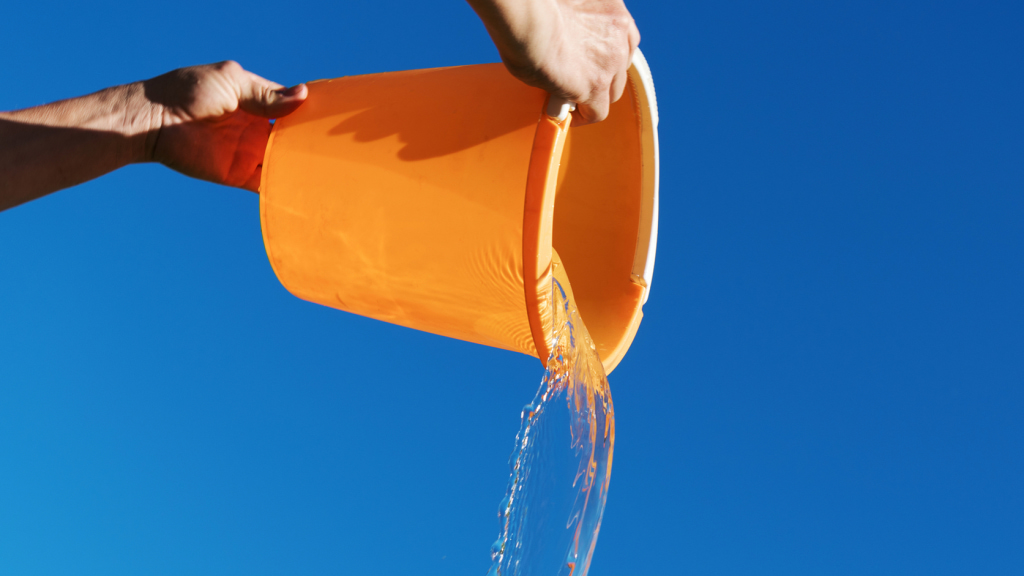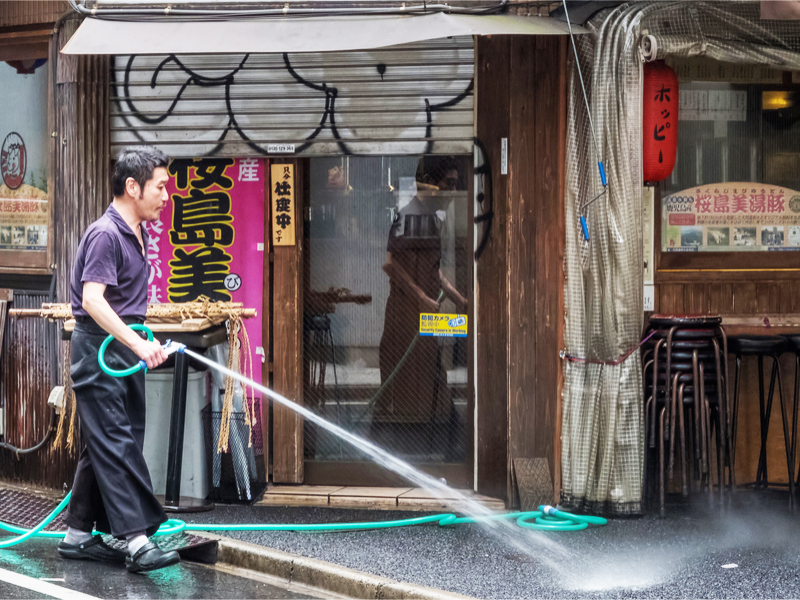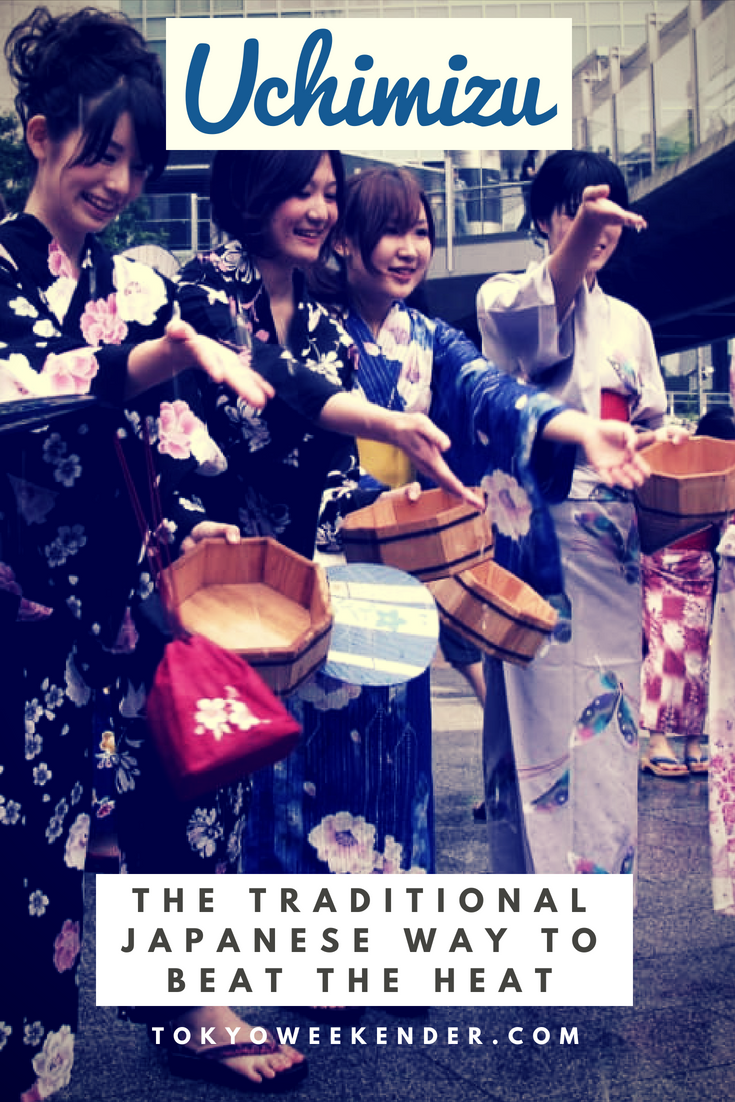The high humidity and soaring temperatures of summer in Japan can call for creative measures when it comes to keeping cool – from wearing absorbent cotton yukata and guzzling down kakigori (shaved ice) or somen (cold noodles) to using cooling body wipes, portable fans and neck towels. Everyone has their own personal survival methods to make it through the parts of the day where you have to bravely venture outside of the safety of an air-conditioned room or office.
There is one summer tradition that predates any aircon ingenuity and actually helps to cool the outside world itself: uchimizu – the act of sprinkling water.
The History of Uchimizu
Ever seen a wet patch of sidewalk in Tokyo on a sunny day and wondered when it rained? Or maybe you’ve watched a neighbour or shopkeeper in action, seemingly washing down the street outside their house or business? This is uchimizu, a tradition that dates back to the Edo period and involves filling a bucket or container with water and using your hand or a tool to splash it onto the ground outside.
Combining 打ち (uchi) meaning “to hit or strike” and 水 (mizu) meaning “water”, the term describes scattered water hitting the ground. Sprinkling water has long part of Shinto purifying rituals, such as using the ladle to cleanse your hands at the entrance to a shrine. And just as traditional townspeople did, many elderly citizens and housewives still sweep the street as part of their daily tasks – throwing water is a practical way to tamp down dust.
Sprinkling Water to Cool Down the Earth
You might be dubious as to how splashing some water on hot asphalt is going to make the heat feel any less hellish, but it actually can. Through the process of heat vaporization, as water evaporates it lowers the temperature of the remaining liquid as well as the surface below. This is why a glass of water left out at room temperature actually becomes colder, and why draping a wet towel around your neck is another classic summer cool-down tip—it’s also why your mother told you to dry off properly after a bath or getting wet so you don’t catch a cold!
Due to the rise of global warming, in recent decades several environmental groups in Japan have introduced programs and events to encourage uchimizu, including a scheme promoted by the Tokyo government. Experiments have demonstrated that scattering water can actually reduced the air temperature by a few degrees, so when done en masse could have even larger effects. Communities and neighborhoods sometimes hold large communal uchimizu events in public spaces like plazas or shopping streets, working together to cool down the city.
How to Do Uchimizu the Right Way: The Dos & Don’ts of Splashing Water
From an environmentally conscious perspective, the most important point is to never use tap water to fill your bucket. Recycled or secondary water such as bath water, drainage from an air conditioner or collected rainwater should be used (reclaimed water is also available free of charge to all residents from Water Reclaimation Centres in Shinjuku, Koto and Minato wards). Fill a container – a bucket, bowl or even a PET bottle will do, and head outside. Always be careful to respect your neighbors and passersby, and avoid wetting roads or surfaces that could become dangerous if slippery. Check out the helpful english uchimizu website for more tips and information: uchimizu.jp/en/
Feature Image: Janis Smits / Shutterstock











